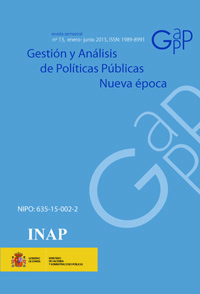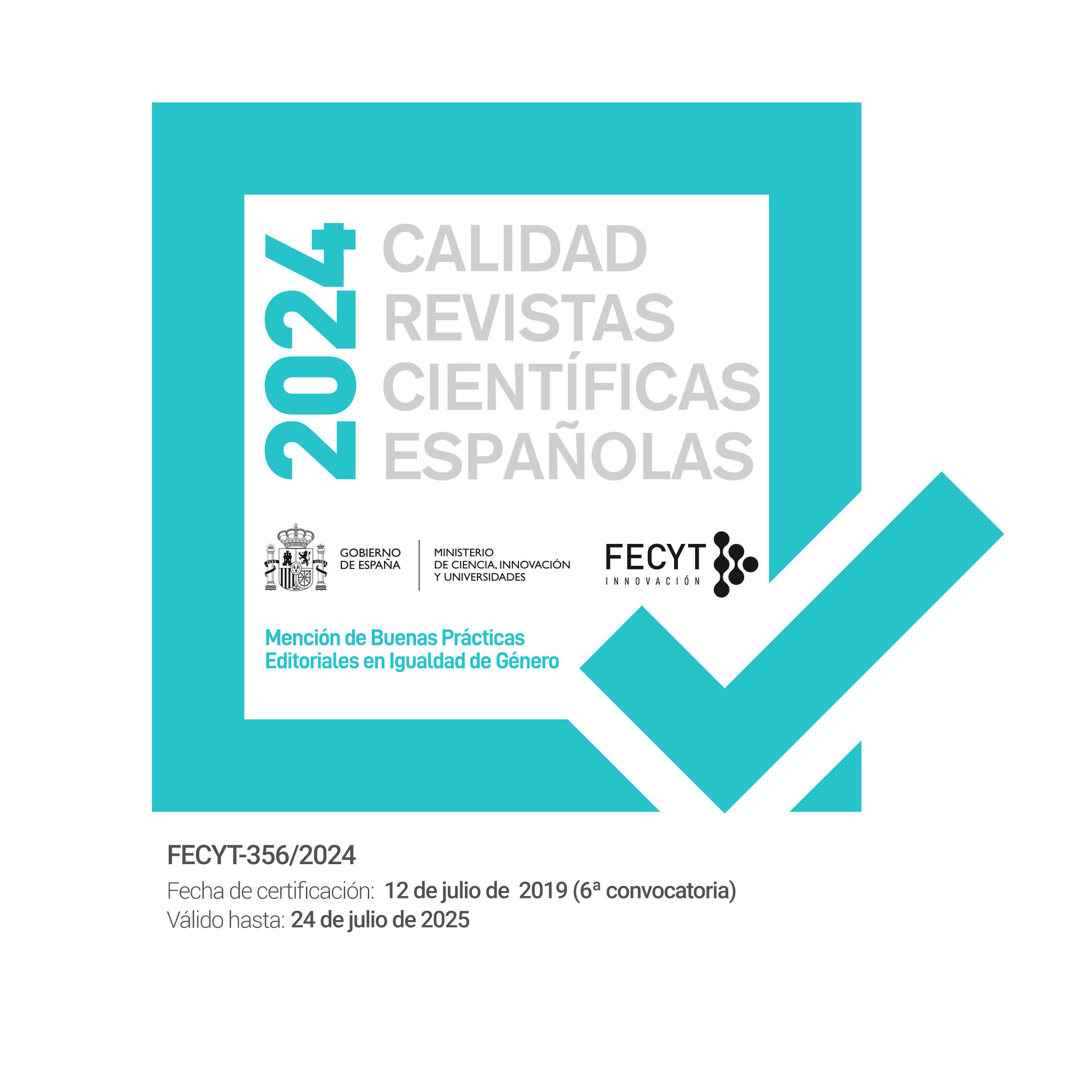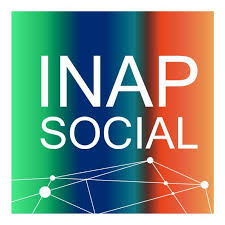Factores de éxito en la implementación de la E-administración en la educación: el caso de los portales del empleado
DOI:
https://doi.org/10.24965/gapp.v0i13.10234Palabras clave:
E-Administración, portales del empleado, educación, factores de éxitoResumen
La implantación de un portal del empleado en la Administración Pública es un proceso cuyo éxito depende de un conjunto de factores clasificados en cinco áreas críticas: información y datos, tecnología, elementos de la organización, elementos institucionales y, por último, contexto. El presente artículo identifica factores clave en cada categoría para el caso de la implementación de un portal del empleado público educativo. Adicionalmente se establece un orden de prioridades, distinguiendo aquellos factores clave desde el inicio de aquellos a desarrollar en fases posteriores.
Descargas
Citas
ABUALI A; ALAWNEH A; y MOHAMMAD H (2010), ”Factors and Rules Effecting In E-Government”, European Journal of Scientific Research, vol. 39, num. 2.
AHN, M J (2011), “Adoption of e-communication applications in U.S. municipalities: The role of political environment, bureaucratic structure, and the nature of applications”, The American Review of Public Administration, vol. 41, pp. 428-452. DOI: 10.1177/0275074010377654.
AHN, M J; BRETSCHNEIDER, S (2011), “Politics of E‐Government: E‐Government and the Political Control of Bureaucracy”, Public Administration Review, vol. 71, num. 3, pp. 414-424. DOI: 10.1111/j.1540-6210.2011.02225.x
ALMARABEH, T; y ABUALI, A (2010), “A General Framework for E-Government: Definition Maturity Challenges, Opportunities, and Success”, European Journal of Scientific Research, vol.39, num.1, pp.29-42.
BANDYOPADHYAY, A; y SATTARZADEH, S (2010), “A challenging e-journey along the silk road: lessons learned from e-governments in China and India”, en Reddick CG (ed.): Comparative e-government, pp. 116-138, New York, Springer. DOI: 10.1007/978-1-4419-6536-3_6.
BAQIR MN; e IYER L (2010), “E-government maturity over 10 years: a comparative analysis of e-government maturity in select countries around the world”, en Reddick CG (ed.): Comparative e-government, pp. 3-22, New York, Springer. DOI: 10.1007/978-1-4419-6536-3_1.
CARTER L; y MCBRIDE A (2010), “Information privacy concerns and e-government: a research agenda”, Transforming Government: People, Process and Policy, vol. 4, num. 1, pp. 10-13. DOI: 10.1108/17506161011028777.
CHARALABIDIS Y; LAMPATHAKI F; y ASKOUNIS D (2010), “Emerging interoperability directions in electronic government”, en H. J. Popplewell K (Ed.): Enterprise Interoperability IV: making the internet of the future for the future of enterprise, pp. 419-428, London, Springer. DOI: 10.1007/978-1-84996-257-5_39.
CHOUDHARI RD; BANWET DK; y GUPTA, MP (2011), “Assessment of risk in e-governance projects: An application of product moment correlation and cluster analysis techniques”, Electronic Government, an International Journal, vol. 8, num. 1, pp. 85-102. DOI: 10.1504/EG.2011.037699.
COMISIÓN EUROPEA, DIRECCIÓN GENERAL PARA LA EDUCACIÓN Y LA CULTURA (2005), Principios Europeos Comunes sobre las Competencias y Cualificaciones del Profesorado, informe del Directorate-General for Education and Culture.
CORDELLA A; y IANNACCI F (2010), “Information systems in the public sector: The e-Government enactment framework”, The Journal of Strategic Information Systems, vol. 19, num. 1, pp. 52-66. DOI: 10.1016/j.jsis.2010.01.001.
CORRADINI F, POLZONETTI A, RE B, y TESEI L (2008), “Quality of service in e-government underlines the role of information usability”, International Journal of Information Quality, vol. 2, num. 2, pp. 133-151. DOI: 10.1504/IJIQ.2008.022960.
DROGKARIS P; GRITZALIS S; LAMBRINOUDAKIS C (2010), ”Transforming the Greek e-government environment towards the e-gov 2.0 era”, en F. E. Andersen KN (Ed.), Procceedings of the 1st international conference, EGOVIS 2010, pp. 142-149, Berlin, Springer. DOI: 10.1007/978-3-642-15172-9_14.
GAUDINO S; MORO G (2010), “Evaluation of an e-government project: which are the barriers to e-government integration?”, International Journal of Technology, Policy and Management, vol. 10, num. 1, pp. 53-72. DOI: 10.1504/IJTPM.2010.032853.
GIL-GARCÍA JR (2012), Enacting Electronic Government Success: An Integrative Study of Government-wide Websites, Organizational Capabilities, and Institutions, New York, Springer. DOI: 10.1007/978-1-4614-2015-6.
GRÖNLUND A (2010), “Ten years of e-government: the “end of history” and new beginning”, Proceedings of the 9th IFIP WG 8.5 international conference EGOV 2010, pp. 13-24, Berlin, Springer. DOI: 10.1007/978-3-642-14799-9_2.
GIEBER H; LEITNER C; ORTHOFER G; y TRAUNMÜLLER R (2010), “Taking the best practice forward”, en B. L. Chen H-G (ed.): Digital government: e-government research, case studies and implementation, pp. 203-218, New York, Springer. DOI: 10.1007/978-0-387-71611-4_23.
HANNA, NK (2011), Transforming government and building the information society: challenges and opportunities for the developing world, Springer, New York. DOI: 10.1007/978-1-4419-1506-1.
LEE J (2010), “10year retrospect on stage models of e-Government: A qualitative meta-synthesis”, Government Information Quarterly, vol. 27, num. 3, pp. 220-230. DOI: 10.1016/j.giq.2009.12.009.
LEE JY (2010), “The development of e-government capabilities: framework for government”, en R H (ed.): Handbook of research on e-government readiness for information and service exchange: utilizing progressive information communication technologies , pp. 1-20, Hershey, IGI Global. DOI: 10.4018/978-1-60566-671-6.ch001.
LEE C-P; CHANG K; y BERRY F S (2011), “Testing the Development and Diffusion of E-Government and E-Democracy: A Global Perspective”, Public Administration Review, vol. 71, num. 3, pp. 444-454. DOI: 10.1111/j.1540-6210.2011.02228.x.
LUNA-REYES L F; PARDO T A; GIL-GARCIA J R; NAVARRETE C; ZHANG J; y MELLOULI S (2010) , “Digital Government in North America: a comparative analysis of policy and program priorities in Canada, Mexico and the United States”, en Reddick CG (ed.): Comparative e-government, pp. 139-160, New York, Springer. DOI: 10.1007/978-1-4419-6536-3_7.
LUNA-REYES L F; y GIL-GARCÍA J R (2011),“Using institutional theory and dynamic simulation to understand complex e-Government phenomena”, Government Information Quarterly, vol. 28, num. 3, pp. 329-345. DOI: 10.1016/j.giq.2010.08.007.
MEIJER, A; y THAENS M (2010), “Alignment 2.0: Strategic use of new internet technologies in government”, Government Information Quarterly, 2010, vol. 27, num. 2, pp. 113-121. DOI: 10.1016/j.giq.2009.12.001.
OLBRICH S (2010), “Implementing e-government locally - an empirical survey from the European Metropolitan area Rhine-Neckar”, en Reddick CG (ed.): Comparative e-government, pp. 221-237, New York, Springer. DOI: 10.1007/978-1-4419-6536-3_11.
PÉREZ H (2013), Portales del empleado en la e-Administración. Estudio sobre la Administración electrónica educativa española, PhD Thesis, Universidad de Huelva.
PINA, V; TORRES, L; y ROYO, S (2010), “Is e‐government leading to more accountable and transparent local governments? An overall view”, Financial Accountability & Management, vol. 26, num. 1, pp. 3-20. DOI: 10.1111/j.1468-0408.2009.00488.x.
POLGAR J; BRAM R; y POLGAR T (2006), Building and Managing Enterprise Wide Web. Idea Group.
RAHMAN H (2010), “Framework of e-governance at the local government level”, en Reddick CG (ed.): Comparative e-government, pp. 23-47, New York, Springer. DOI: 10.1145/1693042.1693121.
RORISSA, A; DEMISSIE, D; PARDO, T (2011),”Benchmarking e-government: A comparison of frameworks for computing e-government index and ranking”, Government Information Quarterly, vol. 28, num. 3, p.p. 354-362. DOI: 10.1016/j.giq.2010.09.006.
ROSE, W R; GRANT, G G (2010), ”Critical issues pertaining to the planning and implementation of e-government initiatives”, Government Information Quarterly, vol. 27, num. 1, pp. 26-33. DOI: 10.1016/j.giq.2009.06.002.
ROWLEY J (2011), “E-government stakeholders- who are they and what do they want?”, International Journal of Information Management , vol. 31, num. 1, pp. 53-62. DOI: 10.1016/j.ijinfomgt.2010.05.005.
SMITH ML (2010), “Building institutional trust through e‐government trustworthiness cues”, Information Technology & People, vol. 23, num. 3, pp.222 - 246. DOI: 10.1108/09593841011069149.
UBALDI B-C; y Roy J (2010), “E-Government and Federalism in Italy and Canada—A Comparative Assessment”, en Reddick CG (ed.): Comparative e-government, pp. 183-199, New York, Springer. DOI: 10.1007/978-1-4419-6536-3_9.
VALDÉS, G; SOLAR, M; ASTUDILLO, H; IRIBARREN, M; CONCHA, G; y VISCONTI, M (2011), “Conception, development and implementation of an egovernment maturity model in public agencies”, Government Information Quarterly, vol. 28, num. 2, pp. 176–187. DOI: 10.1016/j.giq.2010.04.007.
VALENTI, P; ANTA, R; y BENDERSKY, M (2003), Manual.gob. Estrategias de gobierno electrónico: la definición de un modelo de análisis y estudio de casos, Washington, BID.
VAN VEENSTRA A; KLIEVINK B; y JANSSEN M (2011), “Barriers and impediments to transformational government: Insights from literature and practice”, Electronic Government, an International Journal, vol. 8, num. 2, pp. 226-241. DOI: 10.1504/EG.2011.039838.
VÉLEZ-RIVERA B; RODRÍGUEZ-MARTÍNEZ M; DÍAZ W; NÚÑEZ-MOLINA M; y RIVERA-VEGA PI (2010), “Multidisciplinary e-government research and education as a catalyst for effective information technology transfer”, en: Chen H-G (ed) Digital government: e-government research, case studies, and implementation, New York, Springer, pp. 670-695. DOI: 10.1007/978-0-387-71611-4_31.
YANG, T M; y MAXWELL, T A (2011), “Information-sharing in public organizations: A literature review of interpersonal, intra-organizational and inter-organizational success factors”, Government Information Quarterly, vol. 28, pp. 164–175. DOI: 10.1016/j.giq.2010.06.008.
YAO, Y; LEE, Y W.; HONG, P; y WENG, Z, (2010), “Power of Information Channels: Participation in e-Government Discourse”, AMCIS 2010 Proceedings, Lima, Paper 469.
YU, C-C; y JANSSEN, M (2010), “The need for strategic management and business model design in government and public administration”, Electronic Government, an International Journal , vol. 7, num. 4, pp. 299-315. DOI: 10.1504/EG.2010.035717.
ZHAO, JJ; ZHAO, SY; y ZHAO, SY (2010), “Opportunities and threats: a security assessment of state e-government websites”, Government Information Quarterly, vol. 27, num. 1, pp. 49-56. DOI: 10.1016/j.giq.2009.07.004.












